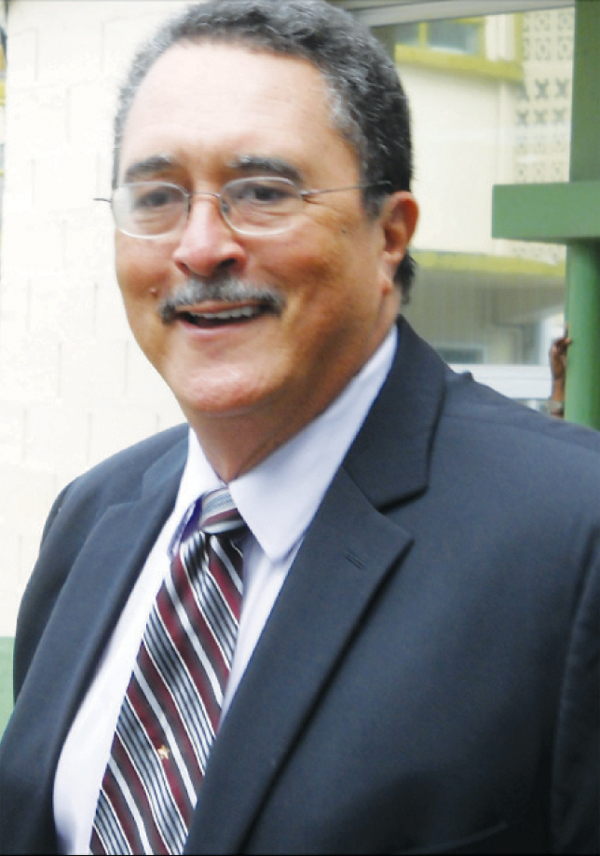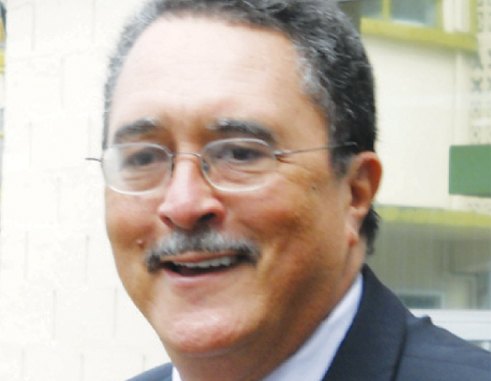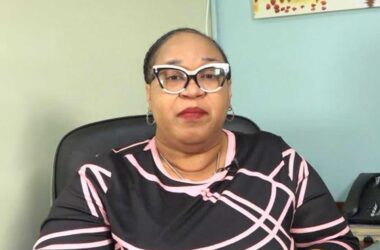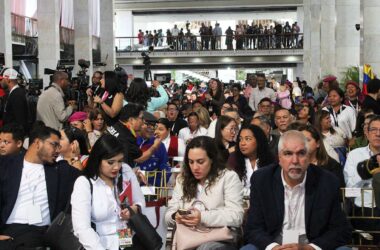Constituency Count Up By 4

SAINT Lucians will find themselves voting in 21 constituencies at the next general elections constitutionally due next year, instead of the 17 they voted in in 2011, following Tuesday’s adoption in the House of Assembly of the Constituency Boundaries Commission’s Report.
The almost four hour debate on the motion to approve the draft order of the Review of Constituency Boundaries will now go to the Governor General Dame PearletteLouisy for her approval.
However, the bill’s passage was not smooth sailing as all members on the opposition benches took potshots at it.
Guy Joseph, Castries South East representative challenged the report’s validity stating that commissioners did not have the resources needed to adequately undertake their assigned task. Though he did not mention what those resources were, he nevertheless dwelt exclusively on the theme that the report was not done “independently.”
Richard Frederick called for a cut in the constituency numbers rather than an increase suggesting an amalgamation of smaller constituencies even though the larger ones necessitated cutting.
He said that by going this way the country could either maintain the same number of constituencies or fewer taking into consideration the financial cost it will have to bear once the number is increased.
He was not the only one concerned about the cost to the country. Leader of the Opposition in the House, Dr. Gale Rigobert also raised the issue.
But Prime Minister Dr. Kenny Anthony had a different view.
He explained that the largest constituencies being in the more urban north while the smallest being in the rural south, posed a challenge to the country to maintain the 17 constituencies in light of the growth in population as noted by the 2010 population census.
“If Saint Lucia were to keep the number of constituencies fixed at 17, then it would suggest an island-wide rebalancing in which the northern region should then have at least 9, or even 10 constituencies and the southern region would have to be rebalanced to have seven or eight. The quandary then would be: where would the two or three constituencies be reduced in the south?,” Dr. Anthony said.
He noted that the spread of constituencies in the south by administrative district highlights the challenge in reducing the south by two or three constituencies through amalgamation.
“There are seven administrative districts to share across seven or eight constituencies. You would observe that Vieux Fort, Micoud and Dennery all have populations that would suggest division into two. Both Vieux Fort and Micoud are 1.7 times the national average for a constituency. The constituency of Dennery is the smallest in terms of three districts in the south with two constituencies.
“Yet, it is very challenging to divide Dennery due to the geographic spread of the population. The likely result would require a cascading of boundary realignments from Dennery through to Choiseul to rebalance the size of the constituencies. It would also mean a number of breaches of the traditional administrative boundaries,” the Prime Minister explained.
From a mathematical perspective he noted that to divide a country into 17 constituencies would mean that each constituency should ideally have 5.8 percent of the population.
“…to account for disparities, you would allow for a +/- 20 percent range. Twenty percent of 5.8 is 1.16 percent, or say 1.2 percent. That would mean you would have to have a country with each constituency having populations between 4.6 percent and 7.0 percent of the total population. Consider the population spread in the south.
“The district of Dennery has eight percent of the population. You cannot have one constituency to cover all over Dennery. It would be too large. The districts of Vieux Fort and Micoud are each 10 percent. You could not cover these districts with just one constituency, combined you may get three constituencies, but then you would have a constituency that completely straddles the two districts.
“Choiseul and Laborie having about four percent of the population are both under what would be the lower range of 4.6 percent. Yet combined, they would be too large as one constituency, exceeding the upper range of seven percent. The southern region comprised of rural constituencies and dispersed communities, perhaps with the exceptions of Vieux Fort South and Soufriere. Population densities by district are lowest in Anse la Raye, Soufriere, Micoud and Dennery. The density in Castries is five times that of Anse la Raye and Micoud. Therefore, any reduction in the south is exceedingly difficult given the scale and spread of the current population of the population across districts,” the Prime Minister said.
He added that to leave things as they are, to do nothing was not an option as this would be in breach of the country’s Constitution and pave the way for the boundaries to be challenged in a court of law.
“It is simply not fair for one constituency to have 14 percent of the population when there are constituencies with four percent. The disparity is simply too extreme,” the Prime Minister said.
The alternative he noted would be achieve nearly equal seats by increasing the number of constituencies in the northern districts, thereby reducing the national average per constituency and bringing the national average closer to the average population of the southern districts, a recommendation of the Commission.
The four new constituencies are all in the north of the island. Gros Islet will now be broken into three constituencies called Gros Islet North, Gros Islet Central and Gros Islet South. Castries Northeast and Castries Southwest will be the other new constituencies.
















Kenny and the SLP have given the St.Lucian people so many reasons to distrust them, that even when they come up with something sensible, it is viewed with suspicion.
If the Constituency Boundaries Commission is made up of both UWP and SLP members, I really don’t see the reason for all the hoop-la; because Dominica, our friend and neighbour, has a population of only 73,000 (or 100,000 less than ours) and they have 21 constituencies.
Barbados, which is much smaller than St.Lucia, but with a larger population has 30 constituencies.
So, again, I don’t see the reason for all the hoop-la over increasing ours from 17 to 21.
I think people need to think what they want their MP to do. It is to represent them on big issues, and their voice in parliament. If there was a proper local government to deal with roads, environment etc then there may not be such a need for an increase.
Really, once an MP gets in they all just drive around and start getting their heads in the clouds. Put more responsibility in the communities, with a modest amount of financing for works and it will go much further.
that is the begining of their downfall. go brave. alan chastanet next PM
Kenny is unbelievable! How could you? All this talk about costs, recurrent expenditure, etc and you now speaking in reverse? SLP MUST BE STOPPED